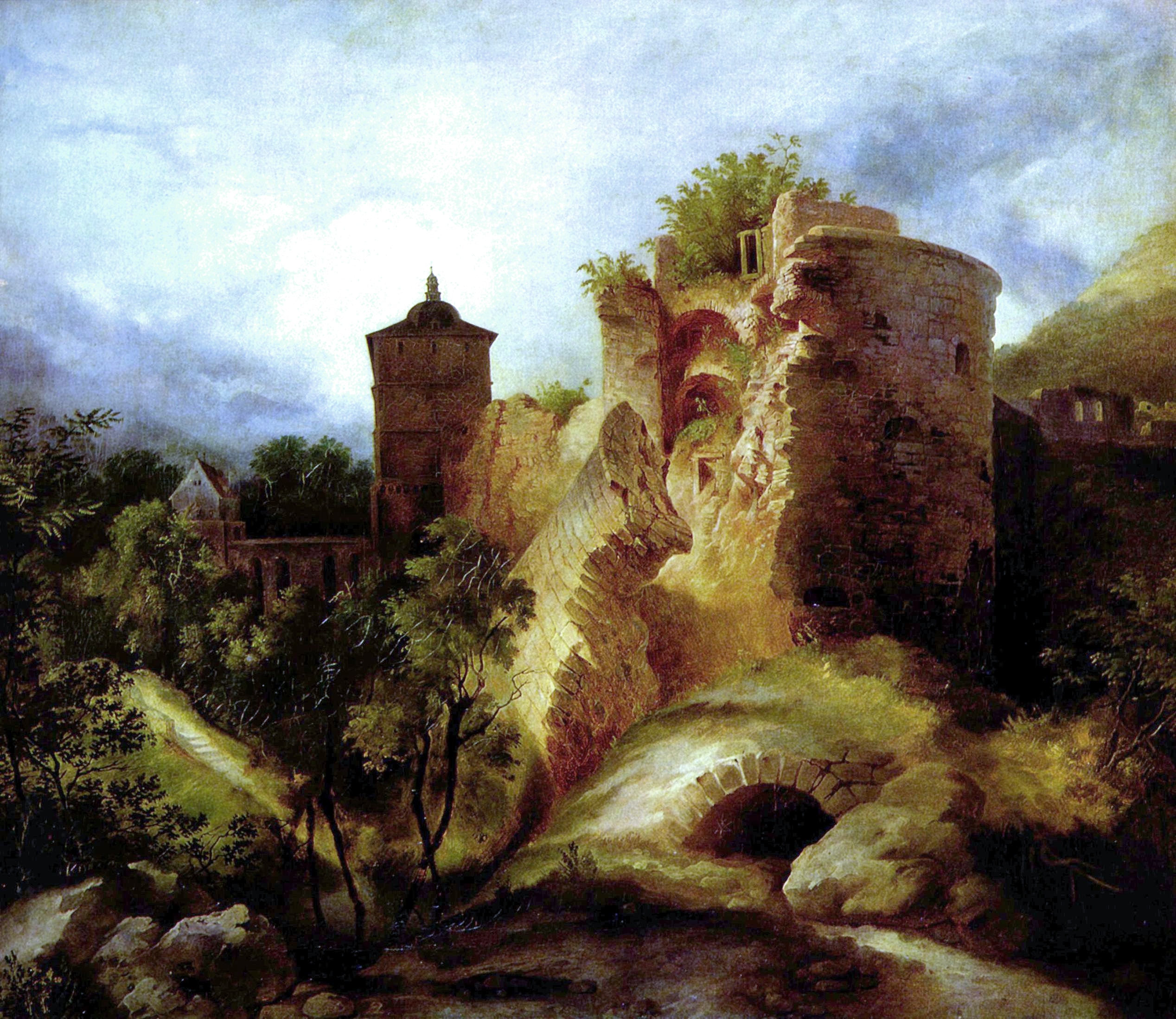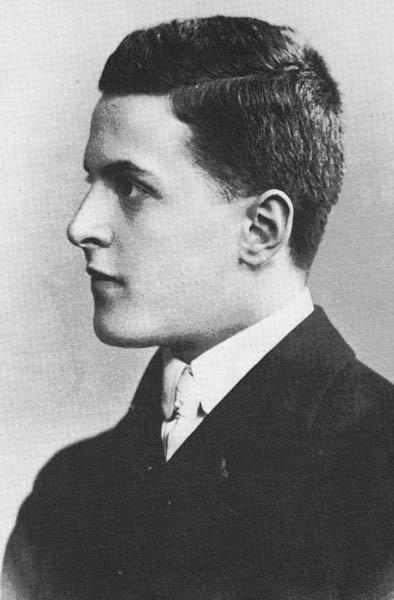This is not a book for our times. Joseph von Eichendorff’s From the Life of a Good-for-nothing / Aus dem Leben eines Taugenichts is a novella that is positively soaked in the Romanticism of its day. But while that might make for exciting poetry elsewhere, it doesn’t make the story nearly as interesting as one might hope. While other writers of German Romanticism, such as Ludwig Tieck and E. T. A. Hoffmann used their Romantic milieu to create gripping and horrific tales that made use of magic and monsters, Eichendorff’s decision to – on the contrary – use Romanticism’s tropes to tell an ultimately happy and positive story means that the whole thing just becomes drearily cheery and predictable.

That’s not to say that From the Life of a Good-for-nothing isn’t without its positive aspects. But for me at least they weren’t enough to make me finish reading with a sense that I’d really enjoyed the work.
Plot
The plot of From the Life of a Good-for-nothing is not complex. Our narrator, an Austrian, is kicked out of his father’s house and decides to find his own happiness in the wide world, taking with him his violin. He finds work in a castle, first as a gardener and then as a collector of customs duties, and there he falls in love with one of the women who live within its walls. Events force him out of the castle and onto the road again, and he decides to visit Italy. On the way he meets various other people, from painters to chambermaids, with whom he sings and dances. He also spends a lot of time wandering through nature, in true Romantic style, falling asleep in bushes and dreaming of being a bird. Once in Rome he meets his beloved again, and chases her back to Austria, where they marry.
Music, Nature, and Poetry in From the Life of a Good-for-nothing
I read From the Life of a Good-for-nothing in the original German. Normally, I try to avoid the originals of these novellas like the plague, but I enjoyed Eichendorff’s work more than I expected to. His writing is rather clear. More importantly, From the Life of a Good-for-nothing contains a lot of poetry, which is never fun to read in translation (including below). I’m not going to pretend that the poetry was fantastic, because unfortunately it is infected by the same sickly cheeriness as the rest of the book, but there were a lot of nice ditties, like this one, from the beginning:
If God decides on joy for man,
He sends him into the wide world
And there He shows him all His wonders,
In crag and river, wood and field.
Those lives which lie enclosed at home
Are not refreshed by morning dew;
They only know of children's cradles,
Of worries, burdens, toil and sweat.
Among the hills the river springs,
The larks are whizzing high from joy,
Why shouldn't I be singing with them,
With all my throat and all my chest?
I let the dear lord God be praised:
His rivers, larks, and woods and fields,
And earth and heaven are so great,
And He gives blessings to me too.
The poem really contains within itself the essence of From the Life of a Good-for-nothing. Here nature is seen as the greatest thing that humankind possesses. And real happiness is to live within that nature. Singing and playing music always seem the happiest moments of the narrative, especially because as the novella progresses the narrator finds himself ever more often in the company of people who are willing to join in with him in the playing. Music is a universal language, in contrast to the various other languages encountered by the narrator – French, Latin, and Italian – which he doesn’t speak. He is left isolated and sad when he is unable to speak with and understand people, but using the power of music he is able to overcome language barriers. There is one moment near the end where he joins in a Latin song because the music is accessible to him.

Nature’s great. The narrator spends lots of time wandering around hills and forests and falling asleep in trees. He also regularly expresses a wish to be a bird. This is Romanticism, but it’s not always particularly interesting. It may be that I didn’t understand all of the fine details of the descriptions of forests, but I feel like I understood enough to follow the general idea. The problem with all of this is that the book is hopelessly cliched to modern readers, and far too happy. Don’t get me wrong, I try to be positive in my own life, but the whole worldview of From the Life of a Good-for-nothing is so terribly optimistic it makes me squirm. All you need is the power of music and your own two feet and you can travel the world, make money, and marry the girl of your dreams. It sounds silly.
The Context and Politics of From the Life of a Good-for-nothing
From the Life of a Good-for-nothing was finished by Eichendorff in 1823, and any deeper look at the novella will struggle to avoid the political dimensions that lurk beneath the surface of the work. But first, the context. The German lands, Britain, Austria, and Russia in 1815 had ultimately emerged victorious in the conflict with Napoleon. However, the ideas of the French Revolution were not to be stopped as easily as its political and military leaders were. To combat these ideas, of progress and of freedom, the Austrian foreign minister and later also Chancellor, Klemens Metternich, organised a system of alliances with Russia and Prussia to isolate France and liberalism and also keep such ideas repressed within their own borders by means of increased censorship.
From the Life of a Good-for-nothing, for all its apparent innocence, is not free from the influence of its times, and is ultimately a rather conservative book – just as Romanticism more broadly in some ways was. The novella begins in a world of hard work – a world where even the snow drips “industriously” (emsig), under the shadow of the narrator’s father’s mill. Although the mill is not a modern invention, its inclusion nonetheless reflects the Romantics’ concerns about the destruction of nature for economic reasons. The narrator, instead of continuing to try to conquer nature, goes out and wanders. He finds his joy singing among the trees – a harmony, where the mill otherwise indicated disharmony. His job as a gardener is also implicitly contrasted with that of the millworker. As a gardener he is responsible for ensuring nature’s growth and development, rather than its control and destruction.
The narrator’s reward for his rejection of the stodgy, sedentary life, is the girl of his dreams and a house and wonderful wedding trip. He manages to “earn” more by not trying to “earn” anything within the growing industrial framework of value, and he does all this while being happier than the average worker. Further evidence for the rejection of modernity comes in the portrayal of Rome, where the narrator dreams of nature and doesn’t enjoy the company of the people he meets.
The ending of the novella is not only conservative for its attitude towards hard work. It’s also important to pay attention to class here. The poet’s beloved, who for the majority of From the Life of a Good-for-nothing is referred to as the “Countess”, turns out not to be a noblewoman at all. At the very last moment of the story she declares herself a foundling – thus making her marriage to the narrator suitable from a social perspective. The conservatism of the novella lies, therefore, not simply in a Romantic rejection of early industrialisation and urbanisation, but also in a subtle refusal to allow anything that would go against the existing class structures and propriety. Go into nature if you so wish, but know your place. In light of Marx and the development of radical politics later on in the 19th century this message is dangerously naïve.
Conclusion
Look, don’t get me wrong, From the Life of a Good-for-nothing is a fun and innocent book. It comes from a simpler, kinder time than our own. To come at it with a modern and critical sensibility is to destine yourself for disappointment and frustration. Its escapism is too unreal and impractical to offer any solutions for our own cynical lives, and its ultimate message of idleness being the source of wealth is not particularly inspiring either. If idleness had engendered a mental wealth, but not a physical one, then the book’s message would be both more relevant to our own days, where many are attempting to extract themselves from the rat race. To say we can make money by doing nothing, unless we’re rentiers already, is a stupid lie, and one that distracts from the value of the escapism the book otherwise proposes. At least the poetry’s good.
For more German poetry, have a look at my thoughts on a few pieces of Hugo von Hofmannsthal’s work here. For more interesting examples of German novellas, see Storm’s Aquis Submersus and Meyer’s Marriage of the Monk.
Have you read From the Life of a Good-for-nothing? Am I wrong to dislike it? Have I completely misunderstood the whole thing? Why not leave a comment!



